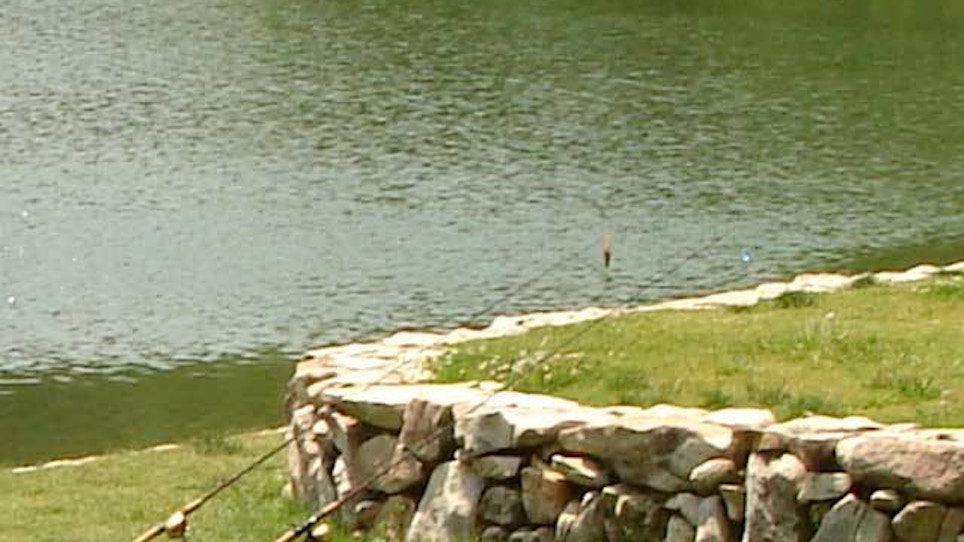By JOHN McCOY | The Charleston Gazette
CHARLESTON, W.Va. (AP) — "Fingerling" is a term biologists use to describe young fish that have grown to about the size of a finger.
Biologists in West Virginia must have really, really big hands.
Division of Natural Resources hatchery workers recently stocked more than 500 fingerling muskellunge that averaged a whopping 12 inches in length. Jeff Hansbarger, a DNR district fisheries biologist, called the fish "advanced fingerlings."
"There are certain waters where we can't stock normal-sized muskie fingerlings because they'd end up getting eaten by predators," Hansbarger explained. "For those waters, we grow the fingerlings to a size that makes them more difficult for predators to eat."
This year's stocking required an all-hands-on-deck approach, mainly because most of the young fish were being tagged for future research projects. Biologists, hatchery workers and volunteers from the Muskies, Inc. fishing organization gathered at the DNR's Palestine Hatchery to help with the effort.
"We harvested the fish from one of the hatchery's ponds, anesthetized them, measured their lengths, injected them with (passive electronic) tags, loaded them into stocking trucks and released them at several lakes," Hansbarger said.
The pond yielded 537 young muskies. Hansbarger said 100 of them did not receive tags.
"We sent the untagged fish to (Jackson County's) Woodrum Lake and (Ohio County's) Bear Rocks Lake. The 437 tagged fish were sent to (Lewis County's) Stonewall Jackson Lake, (Lincoln County's) Upper Mud River Lake and (Monongalia County's) Mason Lake."
The tags, called PIT tags, are information-coded electronic microchips enclosed in plastic cylinders not much bigger than grains of rice. Biologists use large hypodermic needles to inject the tags under the fishes' skin near their dorsal fins.
"PIT stands for 'passive integrated transponder,'" Hansbarger said. "When a tagged fish is recaptured, we can pass an electronic reader over the tag and identify the fish by its tag number."
This year's batch of tagged advanced fingerlings will be used in two DNR research projects. In the first, Hansbarger will attempt to validate a non-lethal method he's been using to determine muskies' ages.
"Up to now, the only way to accurately determine a fish's age has been to kill the fish and examine the growth rings in its `otolith,' or ear bone," he explained. "To remove the otolith, you first have to kill the fish, and with large predatory fish like muskies you just don't want to do that.
"I think we can get equally valid results by looking at the growth rings in the rays of a muskie's pelvic fins. Clipping off a piece of fin doesn't harm the fish, and if we can determine that the pelvic fin ray technique is accurate, we'll have a powerful new non-lethal research tool at our disposal."
Hansbarger plans to validate the technique by tagging young-of-the-year muskies, recapturing and fin-clipping them when they're older, and using information on the tags to determine if the rings on the pelvic fin rays match the fishes' age.
West Virginia is located near the southern edge of muskies' native range, a factor Hansbarger said should work in the new technique's favor. Muskies from more southerly climes grow faster than they do in Canada or the upper Midwest, and therefore have more widely spaced growth rings in their fin rays.
"The fish for my study went to Upper Mud River Lake and Mason Lake," he said. "I wanted to have northern and southern water bodies where I could recapture fish and compare the (growth-ring) formation in their pelvic fins."
The rest of the tagged fish went to Stonewall Jackson Lake, where DNR officials plan to equip marina operators with tag readers to determine the ages of recaptured muskies. Beginning in January, a 52-inch minimum size limit will go into effect at Stonewall, so almost all muskies caught will have to be released.
"Being able to use the tags to determine fishes' ages will give biologists a better idea of how fish are surviving, and how the lake's age structure is stacking up," Hansbarger said.
He called the advanced fingerling-tagging effort "a good project where a lot of people came together and worked for the good of the muskie-fishing resource."
"This is something to feel good about," he said.
———
Information from: The Charleston Gazette, www.wvgazette.com






